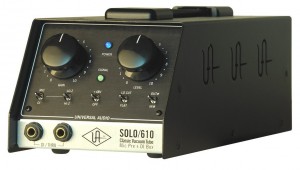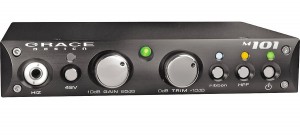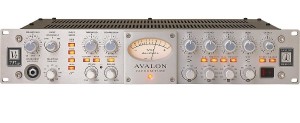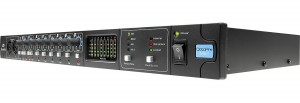
Today’s Essential Recording Studio Topic: Microphone Preamps.
Here’s what you’re about to discover in just the next few minutes….
- Are Dedicated Mic Preamps STILL Necessary??? – What industry insiders are now saying about this controversial question.
- Single Channel vs Multi-Channel Preamps – What You Need to Know (Pros vs Cons)
- 3 Classic “Channel Strips” for Breathtaking Vocals – Could this be the “secret sauce” missing from your mixes all this time?
- PLUS… Two Iconic Preamps “Stolen” from Classic Studio Consoles – which means anyone can access the sounds of multi-milllion dollar studios for just a tiny fraction of the cost.
Best Part: All of this (and more) is ready and waiting for you below at the click of a mouse button.
First up…
A Single Channel Microphone Preamp from a Classic Console

The #1 reason people go shopping for microphone preamps is to buy a single channel that will make their vocals shine.
Because even a great microphone won’t sound nearly as good as it could, when paired with a great preamp.
Now…since every audio interface these days comes with several decent preamps built-in, it doesn’t make much sense to buy a single channel external preamp unless it’s amazing.
Which is exactly what you’ll get from the Universal Audio SOLO/610, featuring the same preamps used in the classic Putnam 610 console.
Like most high-end preamps, it features a simple, no-frills design. So simple in fact, that there are only 2 connections on the back:
- 1 XLR input
- 1 XLR output
If a single channel for vocals is all you want, this is the preamp to get. Here’s the link:
- Universal Audio SOLO/610 – (Amazon/Sweetwater/Thomann)
Also check out these similar UA mic pre’s that include compression as well:
- Universal Audio LA-610 Mk II – (Amazon/Sweetwater) which combines the 610 mic pre with a T4 optical compressor
- Universal Audio 6176 – (Amazon/Sweetwater/Thomann) which combines the 610B with the classic 1176LN Limiter
Up next…
An Exceptional High-End Preamp with “Ribbon Mode”

Back in 1990, Michael Grace started the Grace Design company, making only a small number of high-end boutique mic preamps.
And it didn’t take long before they were known as one of the top names in the industry.
While most of their stuff is far outside the price range of home studios, the Grace Design m101 is one of the few preamps they make that’s significantly cheaper than the rest (but still pricey).
An improvement upon the massively popular Model 101 pre, the M101 is built entirely with top-notch components, unmatched by competitors.
Other than its pristine sound, the one notable feature of this preamp is its unique “ribbon mode”, specifically tailored to protect fragile ribbon mics, and allow them to perform at their best.
All in all, it’s a great option.
- Grace Design m101 – (Amazon/Sweetwater)
Up next…
A High-End Tube Amp with EQ and Compression

Compared to the simple, no-frills design of the last two preamps, the Avalon VT-737sp is the exact opposite.
It features a wealth of controls on the front panel, which can seem intimidating at first glance.
Much more than just a mic pre, it’s also a tube amp, with a sweepable EQ, opto-compressor, and a ton of other features as well. Many would consider it the single most popular channel strip of today.
Here’s a breakdown of what’s included:
- 3 inputs – mic, instrument, line
- 4 input mode switches – hi gain, +48V, phase, filter
- 4 compressor controls – threshold, compression, attack, release
- vintage VU meter
- a wealth of EQ controls – 4 bands, hi/low shelves, Q control
For the ultimate control on a single channel, this is the preamp you want.
- Avalon VT-737sp – (Amazon/Sweetwater)
Up next…
A Basic 8-Channel Mic Preamp for Recording Bands

When you first start recording bands, you’re going to need more mic inputs than most audio interfaces can handle.
So the standard solution, is a cheap, no-frills, 8 channel micropone preamp like the Behringer ADA8200.
The cheapest preamp on this list, it has all the key features you need, and none you don’t. Overall, it’s the perfect first introduction into the next level of home studio recording.
As the successor to one of their best selling products of all-time, the Behringer ADA8000, it’s received a countless number of positive online reviews.
Check it out:
- Behringer ADA8200 – (Amazon/Sweetwater)
Up next…
An Mid-Range 8-Channel Preamp from a High-End Name

As one of the biggest names in the industry, Focusrite has been making ultra high end audio gear longer than many of us have been alive.
But one of their most popular items today is the surprisingly affordable Focusrite Octopre MkII.
Compared to entry-level models, it adds a few nice features which you may be glad to have.
First, it has digital conversion up to 96 kHz (cheaper models only go up to 48 kHz).
At 96 kHz, ADAT outputs carry only 4 channels of audio, compared to the usual 8 channels at 48 kHz. Which is why the Octopre includes 2 ADAT outs, rather than just one.
Another nice features is the fact that it keeps the phantom power switches are on the front, where they’re easily accessible. Many other models keep them on the back for some unknown reason.
Overall, it’s a significant upgrade from the first model we covered on this list.
Here’s the link:
- Focusrite Octopre MkII – (Amazon/Sweetwater/Thomann)
Up next…
A 4-Channel Mic Preamp From Classic API Consoles

Once you start getting towards the really high-end of multi channel preamps, you start seeing 4-channels become the norm, rather than 8.
And while it’s not entirely clear why, I can only assume that each channel requires more physical space to function as it does.
The API 3124V is a classic example of this sort of preamp.
Using the same legendary preamp circuits found only in classic API consoles, the API3124V delivers a level of quality unmatched by any preamp we’ve covered so far.
It has 4 channels, with 4 DI inputs, all the standard buttons, but nothing unusual. Except of course, for how it sounds.
One look at the front panel and you see how incredibly simple it is.
If you can afford it, you’re unlikely to ever find a microphone preamp better than this one.
- API 3124V – (Amazon/Sweetwater/Thomann)
By the way, if you found this post useful, I highly recommend joining our free Home Recording Secrets email newsletter where you’ll discover….
- How to Get Your First Studio Up and Running in a Single Weekend
- How to Avoid Wasting Thousands of Dollars on Unnecessary Pointless Purchases
- How to Get a “Million Dollar” Pro Studio Sound in a “Thousand Dollar” Home Studio
- PLUS… All Sorts of Other Amazing Insider Secrets Revealed
And it’s totally FREE! Click here and Enter Your Email to Sign Up.